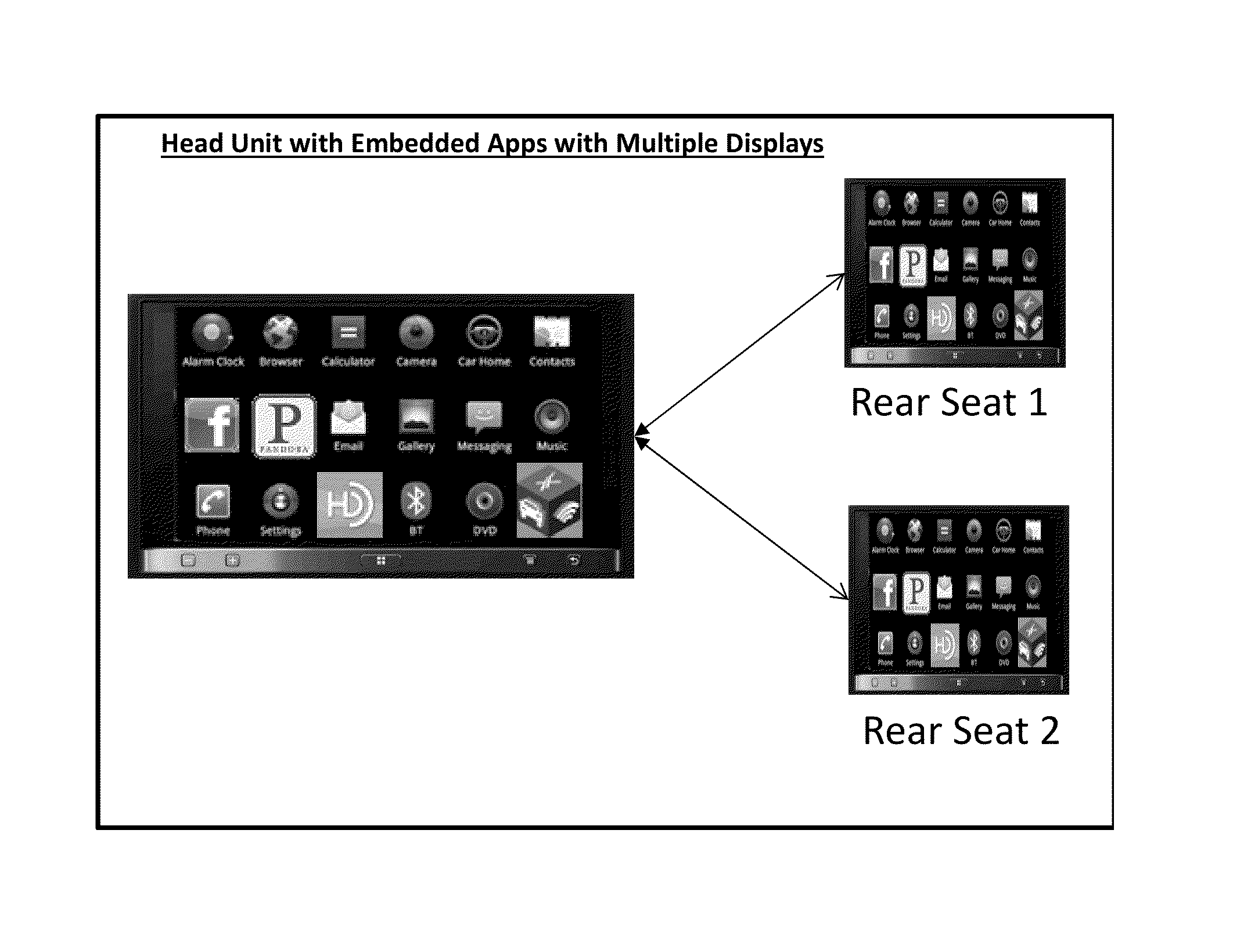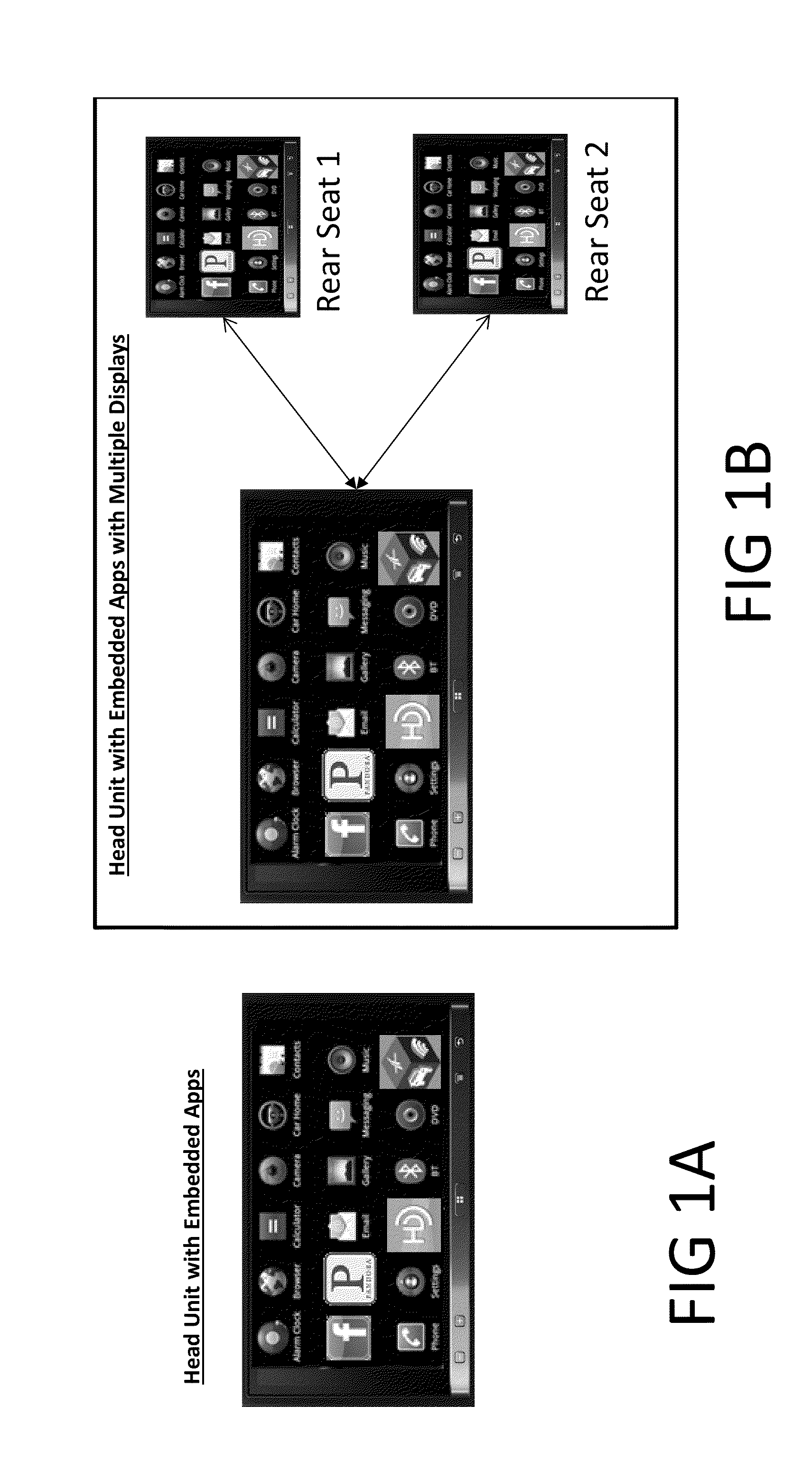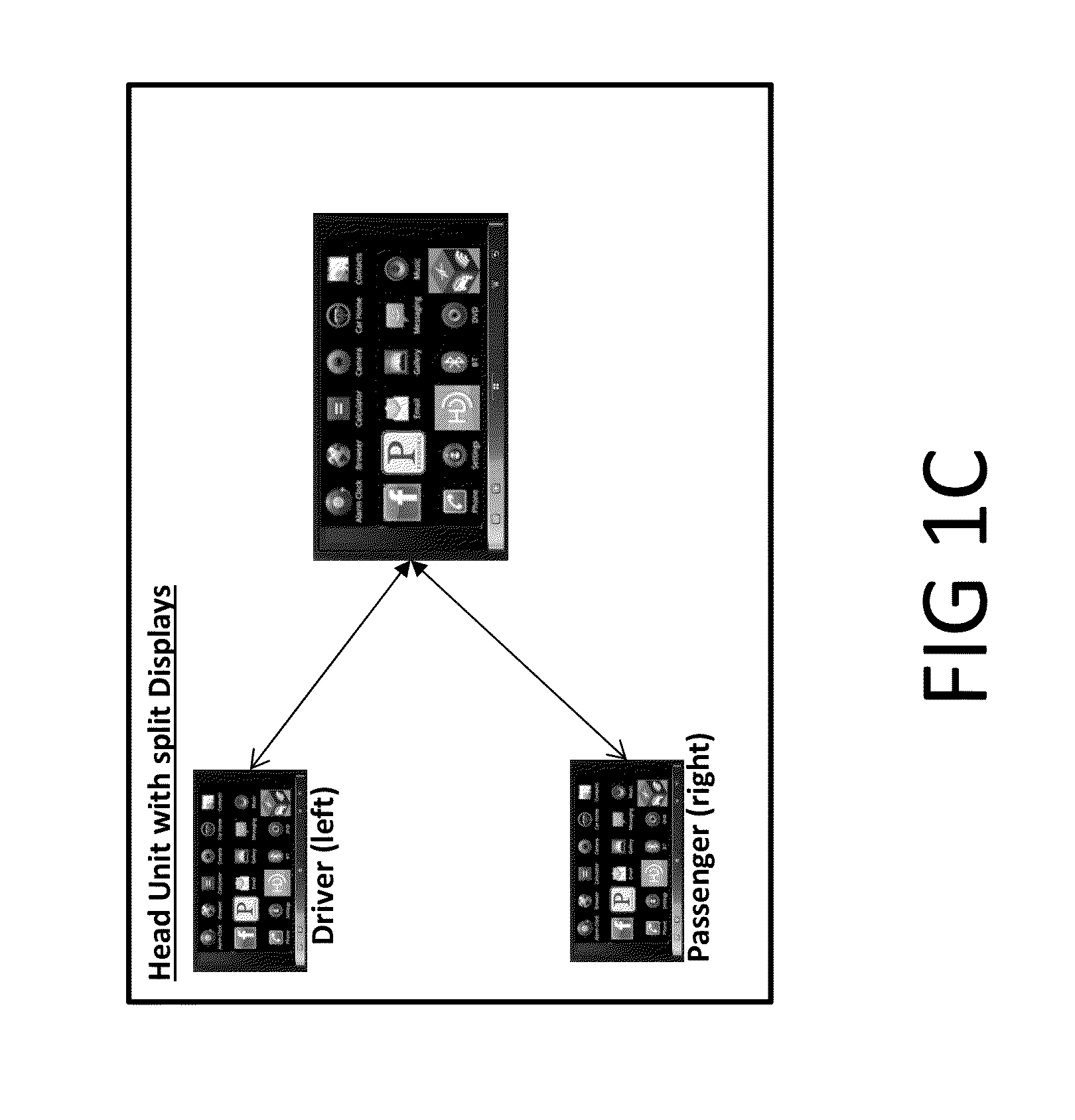System and Method for Monitoring Apps in a Vehicle or in a Smartphone to Reduce Driver Distraction
a technology for monitoring apps and driving vehicles, applied in the field of application software, can solve the problems of exceedingly difficult to load generic apps into vehicles, unable to allow for free download of apps, etc., and achieve the effect of reducing distraction, reducing driver distraction, and modifying the operation of apps
- Summary
- Abstract
- Description
- Claims
- Application Information
AI Technical Summary
Benefits of technology
Problems solved by technology
Method used
Image
Examples
Embodiment Construction
[0056]Apps may be executed in a vehicle in one of several ways. In one embodiment, the app may be stored in and be executed by the head unit. One example of this is illustrated in FIG. 1A in which one or more apps are embedded in the head unit of a vehicle. The vehicle may be used for transporting people or goods, and may be any one of the following: an automobile, a motorcycle, a truck, a cart, or the like. Another example of this is illustrated in FIG. 1B in which one or more apps are embedded in the head unit, and in which one or more electronic devices communicate with the head unit. The one or more electronic devices may be mounted for display in a rear seat of the vehicle (such as in the back side of a headrest). Another example is illustrated in FIG. 1C in which one or more apps are embedded in the head unit, and in which the main display screen is split into two, one for the driver and the other for the front seat passenger. The driver is not privy to the front passenger dis...
PUM
 Login to View More
Login to View More Abstract
Description
Claims
Application Information
 Login to View More
Login to View More - R&D
- Intellectual Property
- Life Sciences
- Materials
- Tech Scout
- Unparalleled Data Quality
- Higher Quality Content
- 60% Fewer Hallucinations
Browse by: Latest US Patents, China's latest patents, Technical Efficacy Thesaurus, Application Domain, Technology Topic, Popular Technical Reports.
© 2025 PatSnap. All rights reserved.Legal|Privacy policy|Modern Slavery Act Transparency Statement|Sitemap|About US| Contact US: help@patsnap.com



